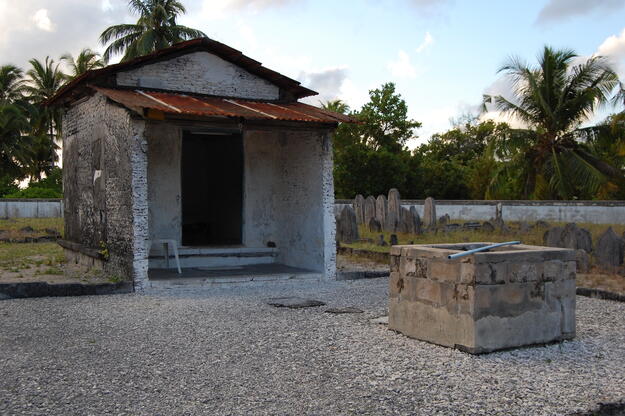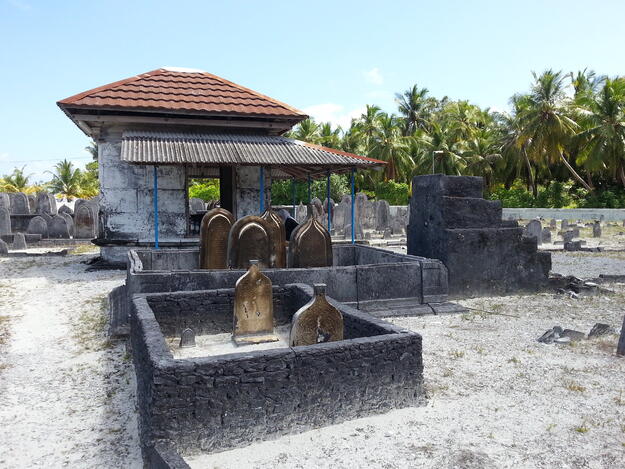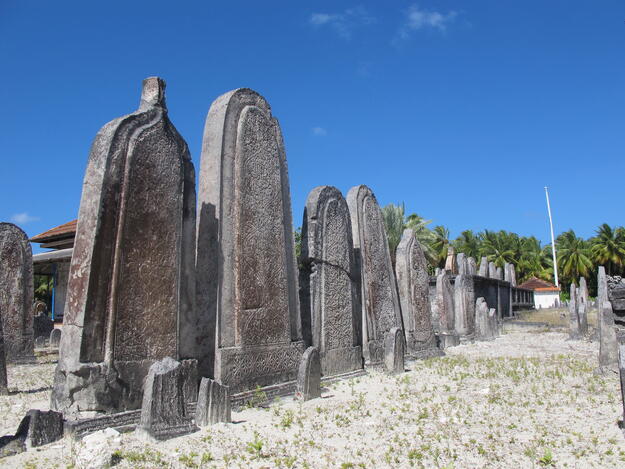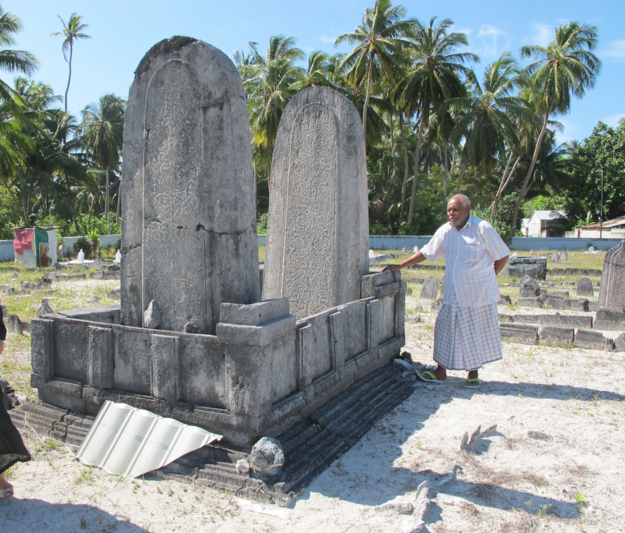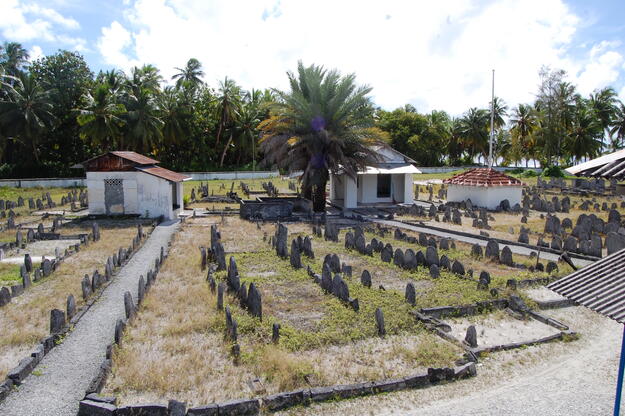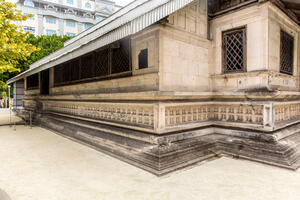Koagannu Mosques and Cemetery
Site History and Significance
The Oldest and Largest Burial Ground in Maldives
Located near the waterfront on Addu Atoll, the southernmost coral atoll in Maldives, Koagannu is the oldest and largest burial ground on the island nation. The important Islamic site has its earliest beginnings in the twelfth century CE with the construction of the first mosque in Maldives soon after the advent of Islam to the region. The surrounding cemetery dates from the subsequent centuries and comprises some 1,500 tombstones, mausolea and additional mosques, all constructed of coral cut from the shallow reefs around the island. Today, Koagannu cemetery preserves this rich traditional coral building tradition, while continuing to be used for burials and serving as an anchor of communal life.
Contending with the Existential Threat of Climate Change
Like the rest of Maldives, the low-lying Addu Atoll faces serious threat from sea level rise. According to current projections, the majority of the land area of Maldives will be underwater by the end of this century. At the same time, the coral reefs surrounding the country’s 26 atolls are threatened by rising ocean temperature and acidity, limiting the ability for the corals to rebuild their calcium carbonate skeletons. The prospect of catastrophic environmental change has led the country to consider drastic options, such as relocating the entire population, an unprecedented endeavor with unforeseen consequences including the complete loss of the nation’s built heritage and cultural landscapes.
Koagannu Cemetery and its mosques are currently under consideration for World Heritage status, along with five other mosques across the country, under the name Coral Stone Mosques of Maldives. If inscribed on UNESCO’s World Heritage List, this would be the first World Heritage site in the country, an honor that would bring international attention to the plight of heritage places in Maldives and other low-lying island states.
2022 World Monuments Watch
The 2022 World Monuments Watch seeks to support documentation and a condition assessment of the tombstones and historic structures of Koagannu, reverse inappropriate interventions to the surviving mosques, and build local capacity in maintenance that will contribute to the long-term preservation of the cemetery. These and other efforts can further highlight the need for global climate action, including strategies for protection and community-driven approaches to prepare for the inevitable loss of treasured places.
![]()
Learn More
Through the World Monuments Watch, WMF collaborates with local partners to design and implement targeted conservation programs—including advocacy, planning, education, and physical interventions in the historic built environment—to improve human well-being through cultural heritage preservation.
Sign up for our newsletter to receive regular updates on our projects, stories from the field, upcoming events, and more!
![]()

